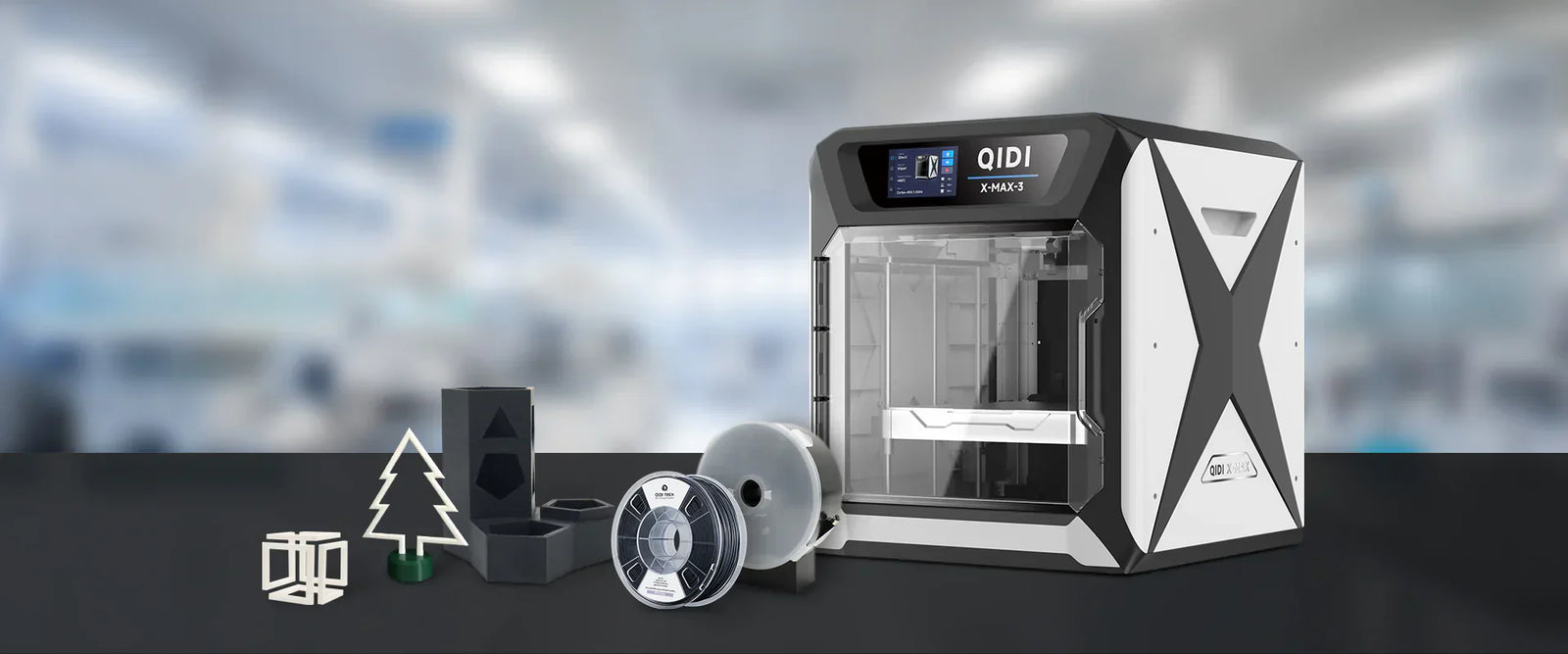How Do You Reduce 3D Print Material?


Watching your 3D printer devour expensive filament can feel like bleeding money with each layer. This article focuses on optimizing material usage through three critical aspects of the 3D printing workflow: design modifications, slicer setting adjustments, and smart printing practices. These three areas represent the entire process from concept to finished print, giving you complete control over material consumption.
Stage 1: Design Parts to Reduce 3D Print Material
Design is the first and most impactful stage in the 3D printing workflow. Changes made here typically yield the greatest material savings with minimal compromise to functionality.

Hollow Solid Models
Most 3D models default to being completely solid but rarely need to be. Create internal cavities while maintaining sufficient wall thickness to dramatically reduce material needs. Use the "Shell" function in CAD software or dedicated tools like Meshmixer.
Key considerations: determine minimum viable wall thickness based on material, size, and stress requirements; include escape holes for resin drainage (SLA/DLP) or air venting and support removal (FDM).
Streamline Non-Critical Areas
Selectively remove material from non-load-bearing sections:
- Add cutouts or channels in low-stress zones
- Implement lattice structures instead of solid infill for significant material reduction
- Utilize topology optimization (available in advanced CAD software) to analyze and remove material from areas that don't contribute to structural integrity
Minimize Support Requirements
Support structures waste material and complicate post-processing. Design to reduce them by:
- Converting sharp overhangs to chamfers or fillets that print without support
- Following the 45-degree rule for FDM printers (overhangs less than 45° from vertical often print unsupported)
- Splitting complex models into sections for optimal orientation, then assembling after printing
Additional Design Optimizations
Question every feature's necessity and thickness. Eliminate purely decorative elements that consume material without adding function. When possible, scale down parts slightly or combine multiple small items into a single print job to share adhesion structures (brims/skirts).
Stage 2: Optimize Slicer Settings for Less 3D Print Material Usage
Slider settings provide the next level for material reduction following design optimization. These settings greatly affect material usage and define exactly how your printer creates each layer.
Customize Infill Parameters
Your print's internal structure is found in infill, which has great material-saving ability. For cosmetic or low-stress pieces, lower density to 5-20%; reserve larger percentages (50%) primarily for strength-critical uses. Choose effective designs like "Cubic Subdivision" or "Lightning" that keep most interior sections sparse and concentrate material where needed for top layer support.
Refine Wall and Surface Settings
Your print's exterior shell is formed by walls—perimeters. Cut them to the minimum required for structural stability; often simply two walls will do instead of three or more. Likewise, use just enough to prevent "pillowing," or visible infill, and give sufficient base strength to optimize top/bottom layer thickness. Every layer reduced directly cuts material use.
Optimize Support Structures
When design cannot prevent supports, minimize their material footprint using tree or organic supports instead of conventional grid patterns. When internal supports aren't necessary, lower support density to the minimal effective level and use "Touching Buildplate" option. Apply support blockers in non-critical regions where surface finish can be impaired and slightly lower overhang angle criteria to provide fewer supports generally.
Select Minimal Adhesion Aids
Select the lightest adhesive technique guaranteed to provide print stability without needless material use. Skirts, which do not touch the model, priming the nozzle consume less material. Save material-intensive rafts just for difficult geometries or problematic materials; utilize brims for pieces with narrow bases or warping tendencies. Set width/thickness to the functional minimum when more adhesion is required.
Stage 3: Implement Smart Printing Practices to Reduce 3D Print Material
Beyond design and slicer settings, material consumption is much influenced by general printing methods. These techniques maximize the whole printing process and help to save waste.
Strategic Rotation for Support Reduction
Your model's orientation on the print bed greatly influences the demand for support materials. See several orientations using the preview feature of your slicer before printing. Try several rotations to find angles that minimize supports and overhangs. Often a basic 45-degree turn may remove large support systems, saving post-processing time and material.

Stronger Materials for Thinner Designs
If you use stronger 3D Printer Filaments (like PETG, ABS, or ASA instead of standard PLA), you might be able to design parts with thinner walls or less infill while maintaining equivalent strength to bulkier PLA parts.This requires understanding different materials' properties and incorporating this knowledge into your design decisions.
Lower Density Materials for Weight Savings
Denser materials translate into more mass for the same volume. Choosing a less dense filament (assuming it satisfies your strength needs) will help to cut the overall plastic weight utilized when manufacturing several parts, thereby perhaps saving expenses for big production runs.
Regular E-step Calibration
Calibrate your extruder steps often to guarantee your printer runs exactly the required filament count. This stops over-extrusion—wasting material with too much plastic—as well as under-extrusion—that results in weak parts and failures. Every print can be affected by differences that a basic 100mm extrusion test finds and fixes.
Routine Nozzle Maintenance
Frequent cleaning of your 3D Printer's nozzle and replacement when worn can help to prevent partial obstructions and uneven extrusion causing failure prints. A well-maintained nozzle guarantees constant material flow, therefore lowering the possibility of print failures wasting whole runs of material.
Proper Filament Storage
Store filament in airtight containers including desiccant to stop moisture absorption compromising print quality. During printing, wet filament generates steam that causes popping, uneven extrusion, and weak layer adhesion—often leading to failed prints and wasted material.
Print More with Less Material!
Reducing 3D print material consumption calls for a coordinated response in design, slicing, and printing techniques. To cut filament use without sacrificing quality, hollow your models, reduce supports, maximize infill settings, and keep your equipment in good shape. These methods produce useful prints and save money as well as lower environmental effect. Material efficiency becomes second nature when you mix techniques from every workflow level, therefore changing the way you handle every job.



